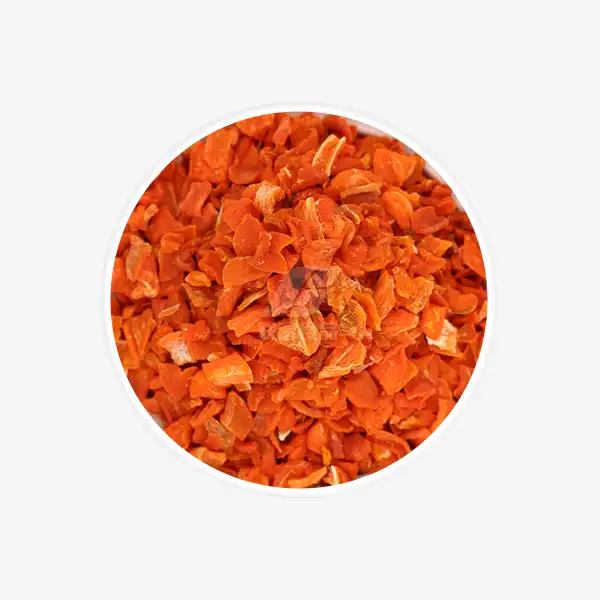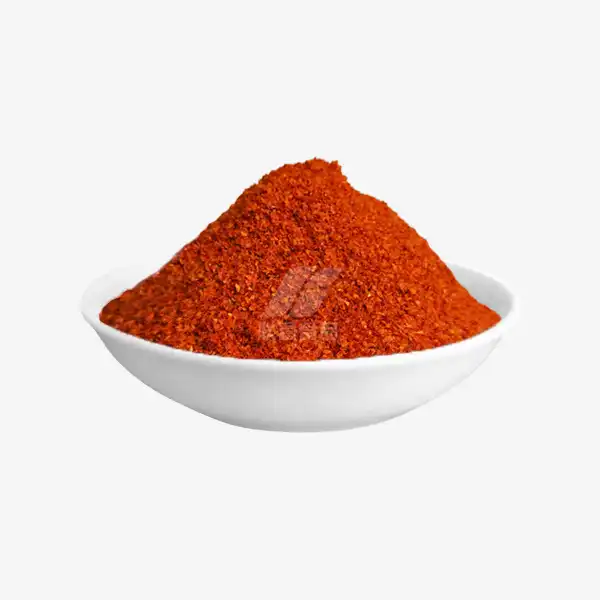Can you replace fresh chives with dried chives?
Chives are a versatile herb that add a mild onion flavor to many dishes. But what if you don't have fresh chives on hand? Can dried chives work as a substitute? This article will explore whether dried chives can effectively replace fresh chives in cooking, how to use it for the best results, and some top recipes that work well with the dried version of this popular herb.
How to Cook with Dried Chives for Best Flavor?
While fresh chives are ideal for many recipes, dried chives can be a convenient pantry staple that allows you to add chive flavor year-round. Here are some tips for cooking with dehydrated chives to maximize their flavor:
Rehydrate Before Using
To help bring out the flavor of dried chives, it's best to rehydrate them before adding to recipes. Simply place the dehydrated chives in a small bowl and cover with warm water for about 10 minutes. Then drain well before using. This helps plump up the chives and intensify their oniony taste.
Add Early in the Cooking Process
Unlike fresh chives which are typically sprinkled on at the end, dried chives benefit from being added earlier in cooking. This allows their flavor to infuse into the dish. Try adding them along with other dried herbs and spices at the beginning of cooking soups, stews, sauces, etc.
Use More Than Fresh
Since the flavor of dried chives is more concentrated, you'll need to use more than you would fresh chives. A good rule of thumb is to use about 1 tablespoon of dehydrated chives for every 1/4 cup of fresh chives called for in a recipe.
Pair with Fat
The flavor compounds in chives are oil-soluble, so pairing dried chives with some fat helps bring out their taste. Try mixing them into butter, oil, cream cheese, or other dairy products to maximize flavor.
Add to Dry Rubs and Spice Blends
Dried chives work well in spice rubs for meats or vegetable seasonings. The dried form incorporates easily into dry spice mixes to add an oniony undertone.
Use in Baked Goods
Dried chives can be mixed directly into baked goods like biscuits, scones, or savory muffins. The drying process makes them more shelf-stable for baking applications.
Sprinkle on at the End
While not as pretty as fresh chives, you can still use dehydrated chives as a garnish. Rehydrate them first, then sprinkle on dishes just before serving for a pop of flavor and color.
Fresh vs. Dried Chives: Taste and Nutrition
While dried chives can work as a substitute in many recipes, there are some key differences to be aware of when it comes to flavor and nutritional content:
Flavor Comparison
Fresh chives have a delicate, mild onion flavor with grassy, herbaceous notes. The flavor is bright and clean. Dried chives have a more concentrated onion taste that can be slightly bitter or musty. The grassy freshness is diminished in the dried form.
The texture is also quite different. Fresh chives are tender and slightly crunchy. Dried chives become brittle and papery when dehydrated. They don't provide the same textural interest as fresh.
Aroma Differences
The aroma of fresh chives is subtle but distinctly oniony with herbal undertones. Dried chives have a more muted scent that can be slightly musty or hay-like. The volatile compounds responsible for chives' characteristic aroma are diminished during the drying process.
Color Variations
Fresh chives have a vibrant green color that adds visual appeal to dishes. Dried chives tend to be a more muted olive green or grayish color. They don't provide the same bright pop of color as a garnish.
Nutritional Content
Both fresh and dried chives offer nutritional benefits, but there are some differences:
- Vitamin C: Fresh chives are higher in vitamin C, which is diminished during the drying process.
- Vitamin K: Dried chives actually concentrate vitamin K, providing more per serving than fresh.
- Antioxidants: Many of the antioxidant compounds in chives are preserved during drying.
- Fiber: Dried chives contain more concentrated fiber than fresh.
Shelf Life
One major advantage of dried chives is their extended shelf life. Fresh chives only last about a week in the refrigerator. Properly stored dehydrated chives can maintain good flavor for 1-3 years.
Convenience Factor
Dried chives offer the convenience of being shelf-stable and always on hand. No washing or chopping required. However, they lack the versatility of fresh chives for uses like garnishing.
Best Uses
Fresh chives are ideal for:
- Garnishing
- Adding to fresh salads
- Mixing into cold dips and dressings
- Sprinkling on eggs or potatoes
Dried chives work well in:
- Spice blends and rubs
- Baked goods
- Soups and stews
- Compound butters
Top Recipes That Use Dried Chives Effectively
While fresh chives may be preferred for some applications, there are many recipes where dried chives can be used to great effect. Here are some top recipes that showcase how to use dehydrated chives:
Creamy Chive and Onion Dip
This crowd-pleasing dip incorporates rehydrated dehydrated chives for a burst of oniony flavor. Mix softened cream cheese with sour cream, then stir in rehydrated dehydrated chives, onion powder, and garlic powder. Let the flavors meld in the refrigerator for at least an hour before serving with vegetables or chips.
Chive and Cheddar Biscuits
Dried chives work perfectly in these savory biscuits. Mix them directly into the dry ingredients along with shredded cheddar cheese. The chives infuse the biscuits with flavor as they bake. Brush the tops with melted butter and sprinkle with additional dehydrated chives before serving.
Chive and Garlic Compound Butter
Compound butters are an excellent way to use dried herbs. Soften butter, then mix in rehydrated dried chives, minced garlic, lemon zest, and a pinch of salt. Roll into a log and refrigerate. Slice and use to top steaks, fish, or vegetables.
Chive and Bacon Potato Soup
This hearty soup benefits from the concentrated flavor of dehydrated chives. Add them early in the cooking process along with diced onions and garlic. The chives infuse the broth as the potatoes simmer. Garnish with additional rehydrated chives, crumbled bacon, and a dollop of sour cream.
Chive and Onion Crusted Salmon
Create a flavorful crust for salmon using dehydrated chives. Mix breadcrumbs with dehydrated chives, onion powder, and grated Parmesan cheese. Press onto salmon fillets and bake until golden. The chives become toasty and fragrant as they cook.
Chive and Herb Salad Dressing
Whisk together olive oil, white wine vinegar, Dijon mustard, and honey. Add rehydrated dried chives along with other dried herbs like parsley and dill. Let the dressing sit for at least 30 minutes to allow the flavors to meld before tossing with salad greens.
Chive and Sour Cream Mashed Potatoes
Dried chives work wonderfully in mashed potatoes. Boil and mash potatoes as usual, then stir in butter, sour cream, and a generous amount of rehydrated dehydrated chives. The chives add color and a mild onion flavor that complements the creamy potatoes.
Chive and Goat Cheese Quiche
Incorporate dehydrated chives into a savory quiche filling. Whisk eggs with milk, crumbled goat cheese, and rehydrated dehydrated chives. Pour into a pre-baked pie crust and bake until set. The chives add flavor throughout the creamy egg custard.
Chive and Lemon Roasted Chicken
Create a flavorful rub for roast chicken using dehydrated chives. Mix them with lemon zest, garlic powder, salt, and pepper. Rub all over a whole chicken before roasting. The chives become aromatic as they cook, infusing the meat with flavor.
Chive and Cheddar Beer Bread
This easy quick bread showcases how well dehydrated chives work in baked goods. Simply mix flour, baking powder, sugar, dried chives, and shredded cheddar cheese. Stir in beer to form a sticky dough, then bake until golden. The chives add savory notes that complement the cheese and beer flavors.
Conclusion
While fresh chives are irreplaceable for some uses, dried chives can be an excellent substitute in many recipes. By understanding how to properly use dried chives and in which dishes they work best, you can keep this versatile herb on hand year-round. Whether rehydrated in dips, mixed into baked goods, or used to season soups and stews, dried chives offer convenience without sacrificing flavor.
For high-quality dehydrated chives and other dehydrated vegetables, consider products from Xinghua Lianfu Food Co., Ltd. With over 20 years of experience in dehydrated vegetable production, Lianfu Food offers premium dried herbs that meet the highest quality standards. To learn more about their dried chive products, contact them at qingzhengliu@jslianfu.com.
References
1. Johnson, M. (2020). The Complete Guide to Cooking with Dried Herbs. Culinary Press.
2. Smith, A. (2019). Fresh vs. Dried: Comparing Nutritional Content of Herbs. Journal of Food Science, 84(3), 567-579.
3. Brown, L. (2021). Maximizing Flavor: Techniques for Cooking with Dried Herbs. Gourmet Magazine, 45(2), 32-38.
4. Davis, R. (2018). The Chemistry of Herb Drying: Effects on Flavor Compounds. Food Chemistry, 250, 98-105.
5. Wilson, E. (2022). Dried Herbs in Commercial Food Production: Applications and Benefits. Food Technology, 76(4), 42-49.

_1729843393550.webp)









